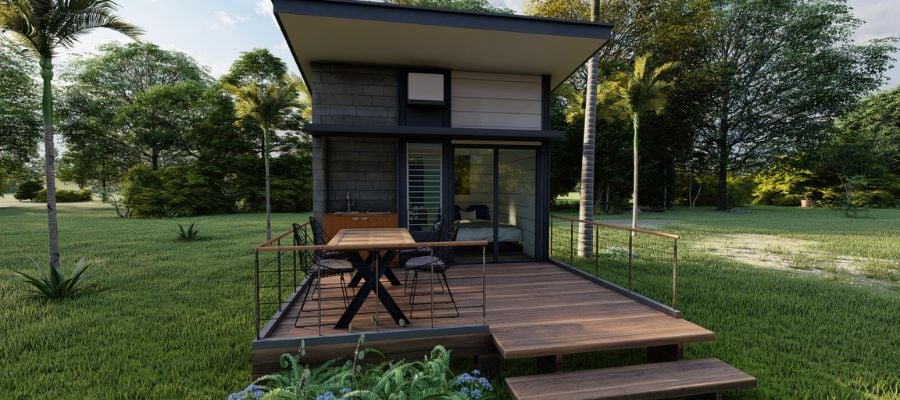Struggling to turn tiny homes into big sales? (see what we did there?) Fear not, we have the tips to help you navigate industry challenges, find the right buyers, and ultimately learn how to sell tiny homes effectively.
Let’s start off by addressing the elephant in the room…selling tiny homes is difficult. With the perception of tiny homes as a fad, it can be challenging to find buyers who see their full potential. However, with the right strategies, and sales points, you can easily learn how to sell tiny homes. Let’s jump into our 6 steps on how to sell tiny homes.
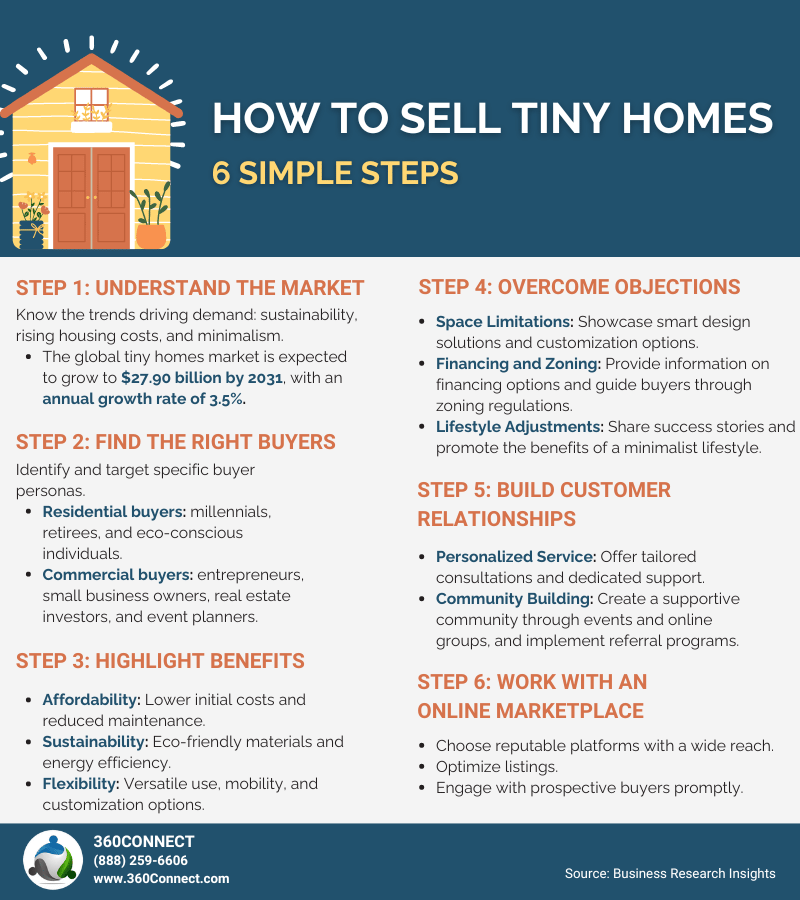
Step 1: Understand the Market – How to Sell Tiny Homes in Today’s Market
Although tiny homes can be difficult to sell, the market is doing great! The global tiny homes market was valued at $20.47 billion in 2022 and is expected to grow to $27.90 billion by 2031, with an annual growth rate of 3.5%.
So, how do you sell tiny homes in today’s market? To successfully sell tiny homes in today’s market, it’s important to understand the factors driving this growth and how to leverage them in your sales strategy. Two major ways to do that is to look at trends and challenges.
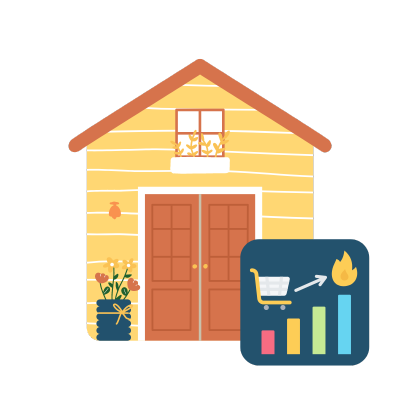
Market Growth and Trends
The growth in the tiny home market can be attributed to many factors like affordability, sustainable living, minimalist lifestyle, downsizing, and more. Collectively these trends are contributing to the overall popularity and demand for tiny homes. You can better sell in today’s market by understanding these needs and trends.
Challenges in the Market
While the market for tiny homes is growing, there are also challenges to consider. One of the main challenges is zoning regulations and building codes, which can vary widely by location. Some areas have strict regulations that can make it difficult to place or build tiny homes. It’s important to be knowledgeable about these regulations and offer guidance to potential buyers on how to navigate them. This helps ease their mind and gets you one step closer to the sale.
Overall, the demand for tiny homes is there, the industry is growing, and the next step is to find buyers.
Related: Top Buying Trends to Watch in 2024: Supplier Must-Knows
Step 2: Find the Right Buyers – How to Sell Tiny Homes by Finding the Right Buyers
So, there’s clearly demand for tiny homes, so why is it so hard to increase sales? Well, it all comes down to finding the right buyers. Identifying and reaching potential buyers can be challenging, but understanding who they are, where they are, and what they need can make a big difference.
Who: Identifying Your Buyers
First, let’s talk about WHO your buyers are. Residential-wise, you’re typically dealing with millennials looking for affordable housing or additional workspace, retirees seeking to downsize, and environmentally conscious buyers interested in minimalism. Commercial-wise, you’re working with businesses seeking additional office spaces. Based on this, you can create detailed buyer personas, and target each group specifically.
Residential
- Millennials: Often looking for affordable housing options or additional workspace.
- Retirees: Seeking to downsize from larger homes to more manageable living spaces.
- Environmentally Conscious Buyers: Interested in sustainable living and reducing their carbon footprint.
Commercial
- Entrepreneurs: Looking for flexible office spaces or retail solutions.
- Small Business Owners: Needing additional office space or mobile retail units.
- Real Estate Investors: Seeking profitable rental properties.
- Event Planners: Requiring temporary structures for events or exhibitions.
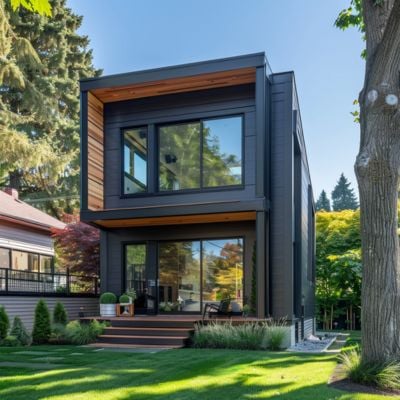
Finding the Right Buyers
Next, it’s time to find your buyers. Using your buyer persona you can implement a strategic outreach and targeted marketing. You can boost your online presence and use SEO and other digital strategies to find the right buyers. Here are a few key strategies to find the right buyer:

Enhance Online Presence
- Optimize your website using SEO for relevant tiny home keywords.
- Create quality content like blogs, newsletters, emails, etc catered to tiny home buyers.
Leverage Social Media
- Post daily on various social media platforms highlighting the benefits of tiny homes.
- Use paid advertising on social media platforms to target your buyer persona and increase your reach.
Engage & Network
- Participate in online forums and groups dedicated to tiny homes, sustainable living, and minimalism.
- Attend industry events, trade shows, and local community events to meet potential buyers face-to-face.
By implementing these strategies, you can effectively find and connect with the right buyers for your tiny homes, ultimately increasing your sales and market presence. Understanding who your buyers are and knowing where to find them is crucial to learning how to sell a tiny home.
Related: Top 5 Tips to Reach B2B Decision Makers
Step 3: Highlight Benefits- How to Sell Tiny Homes by Highlighting Key Benefits
Another crucial aspect of selling tiny homes is effectively highlighting their key benefits. Buyers need to understand the advantages and unique selling points of tiny homes compared to traditional housing options.
Affordability
Tiny homes are significantly more affordable than traditional homes. This affordability makes them an attractive option for a wide range of buyers.
- Lower Cost: Emphasize the lower cost of purchasing and maintaining a tiny home compared to a traditional home.
- Financial Freedom: Highlight how tiny homes can help buyers achieve financial freedom by reducing mortgage and utility costs.

Sustainability
Sustainability is a major draw for many tiny home buyers. These homes are designed to be more environmentally friendly, which appeals to eco-conscious consumers.
- Eco-Friendly: Showcase the environmentally friendly aspects of tiny homes, such as reduced energy consumption and smaller carbon footprints.
- Minimalist Lifestyle: Promote the benefits of a minimalist lifestyle, which aligns with the values of environmentally conscious buyers.
Flexibility and Mobility
Flexibility is another key selling point for tiny homes. Their versatility and mobility make them an appealing option for various buyers.
- Versatile Use Cases: Discuss the various use cases for tiny homes, including primary residences, vacation homes, rental properties, and home offices.
- Mobility: Highlight the mobility of tiny homes, making them ideal for buyers who value the ability to relocate easily.
By focusing on these key benefits, you can effectively market tiny homes to potential buyers, highlighting the unique advantages that make them an attractive option in today’s housing market.
Step 4: Overcome Objections – How to Sell Tiny Homes by Overcoming Common Objections
Potential buyers may have concerns or objections about purchasing a tiny home. Addressing these objections proactively can help you build trust and persuade hesitant buyers. Here are some common objections and strategies to overcome them:
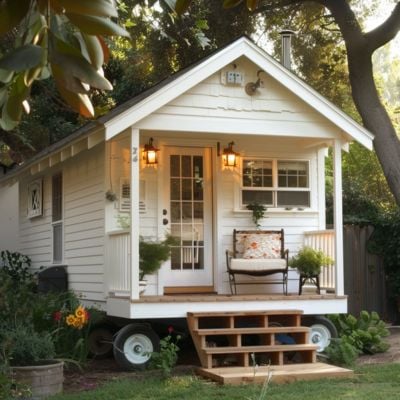
Space Limitations
One of the main concerns is size. Although they’re interested, buyers are still hesitant concerning the limited space. Many potential buyers voice their worry that the tiny home won’t provide enough room for their specific needs—that’s where you come in to help.
- Smart Design Solutions: Showcase how tiny homes utilize smart design solutions to maximize space and functionality.
- Customization Options: Offer customization options to meet the specific needs and preferences of buyers.
Financing and Zoning Issues
Another common objection is the difficulty of securing financing and navigating zoning regulations for tiny homes. These challenges can deter potential buyers from making a purchase.
- Financing Options: Provide information on financing options available for tiny home buyers, including loans and payment plans.
- Zoning Regulations: Educate buyers about zoning regulations and how they can navigate these challenges with your assistance.
Step 5: Build Customer Relationships – How to Sell Tiny Homes by Building Strong Customer Relationships
Building strong customer relationships is key to long-term success in selling tiny homes. Focus on providing exceptional customer service and support to build trust and encourage repeat business and referrals.
Personalized Service
Buyers appreciate personalization. When you call, they want to know you know who they are, what they need, and that they’re not just another name on your checklist for the day. It’s important for buyers to feel valued and understood. To drill this point in, did you know that 96% of marketers say offering a personalized experience increases the likelihood of buyers becoming repeat customers? Indeed, personalization can be a great strategy to sell tiny homes, thus, you’ll need to build strong relationships with your customers to enhance their buying experience.

- Tailored Consultations: Offer personalized consultations to understand the unique needs and preferences of each buyer. Now that we have the official statement out of the way, let’s get to the unofficial statement—get personal. We recommend you get to know your buyer. While this may take a few more minutes out of your day, sharing a story about the town they live in or a personal interest in their day can make a huge difference. People are more likely to buy when they feel a personal connection.
- Dedicated Support: Provide dedicated support throughout the buying process, from initial inquiry to post-purchase follow-up.
Community Building
A great way to sell tiny homes is by being involved in the community. Creating a sense of community among tiny homeowners can enhance customer satisfaction and foster loyalty. In addition, it gets your name out there. By organizing events, creating online groups, and implementing referral programs, you can build a supportive network of buyers who feel connected to your brand.
Referral Programs: Implement referral programs to incentivize satisfied customers to refer new buyers.
Create a Community: Foster a community of tiny homeowners by hosting events, creating online groups, and encouraging buyers to share their experiences.
Step 6: Work with an Online Marketplace – How to Sell Tiny Homes by Working with an Online Marketplace
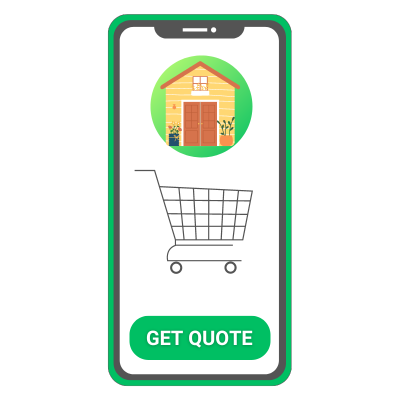
One of the most effective ways to sell tiny homes is by leveraging online marketplaces. These platforms connect buyers and sellers, making it easier for you to reach a broader audience. Here’s how to make the most of online marketplaces.
- Choose the Right Platform: List your tiny homes on reputable online marketplaces. Select platforms with a broad audience to increase visibility and attract potential buyers.
- Engage with Prospective Buyers: Respond to inquiries promptly to demonstrate excellent customer service and interest in meeting buyer needs. Follow up with potential buyers to provide additional information and address any concerns they may have.
With an online marketplace, you can expand your reach, attract more potential buyers, and increase your tiny home sales.
Final Thoughts
Selling tiny homes comes with its challenges, but by finding the right buyers, highlighting key benefits, overcoming objections, and building strong customer relationships, you can succeed in this growing market. The demand for tiny homes is there, and with the right strategies, you can effectively connect with potential buyers and turn those tiny homes into big sales.
Get New Tiny Home Clients Today!
Ready to take your tiny home sales to the next level? Join 360Connect and connect with high-quality buyers. Our platform is designed to help you reach the right audience and increase your sales. Sign up today and start growing your tiny home business with 360Connect!

